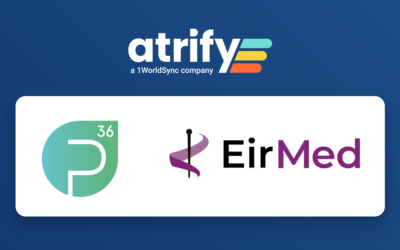Your pathway to EUDAMED data implementation.
Manufacturers of medical products should put a big red ring around 26 March 2020 on their calendars. From this date all product data must be stored in the European database, EUDAMED. But how to go about it? Uploading data and maintaining it in the database – isn’t that complicated? As a manufacturer you don’t want to be in the dark, which is why the European Commission has issued an “MDR EUDAMED UDI Data Dictionary”. This is a register with datasets relating to MDR-UDI and medical products which is designed to ensure seamless input of data into EUDAMED. The Data Dictionary explains in detail the data you should make available to EUDAMED for the “UDI Medical Device Registration” module. According to the European Commission there may be minor adjustments to come, but the dictionary contains all the key information you need so that you’ll always be sending the correct product data to EUDAMED in the future.
Where do I find the EUDAMED requirements?
- Open the EUDAMED UDI Device Data Dictionary
- Compare the EUDAMED requirements with the contents of your own database
- Carry out a EUDAMED attribute analysis: First, compare all values in a column of a table (attributes). Then check the characteristics of the attributes in a table.
- More technical information can be found on the website of the European Commission
The key to successful storage of your data at EUDAMED is comprehensive master data management. The "Corporate Data Dictionary" of your medical devices plays an important role in this. For this reason, it is best to set up your database in such a way that it is precisely tailored to EUDAMED requirements. The Data
Dictionary also helps your IT department to gather the right information, data fields and system codes in a central document. Another advantage: You are up to date again with regard to internal processes and get your data collection on track.
How is the corporate data dictionary used, analysed and created?
- You will receive a comprehensive summary and mapping of external and internal requirements to help you put together optimal descriptions of your products.
- Then a structured overview of attributes, code lists, validations, metadata, data sources, ownership and other elements is created.
- The result is a guideline for internal communication of product content.
- Data quality and efficiency is improved through data maintenance
- You can find more information in our blog The Data Dictionary 1×1
There for you: our atrify service experts in the area of product content management
We serve more than 20,000 users in over 50 countries. Through this intensive collaboration with customers from all over the world, we know: No matter what business you are in, trustworthy data and top data quality are simply indispensable for success.
Atrify's professional services experts can help you create a comprehensive data dictionary of your products. The first steps here include a basic assessment of your product data to create a foundation. In a further step, we carry out an attribute analysis together with your specialist departments. This enables us to map the data requirements in a data dictionary. Together we master the transition to EUDAMED without any problems - click by click.
Learn more about our EUDAMED solution.
Take part in our free EUDAMED learning course to bring your knowledge up to date.




